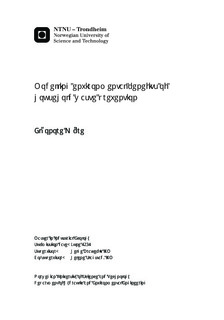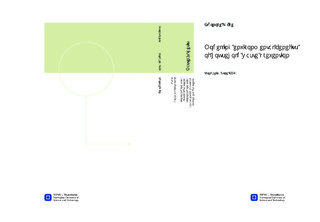| dc.description.abstract | Waste prevention can be seen as a form of waste treatment, and it is then considered as the most desirable option to mitigate the environmental impacts of waste generation. However, some have already pointed out the fact that the true potential of waste prevention might lie in its connection to sustainable consumption, and not as a substitute to waste treatment (Ekvall 2008, Olofsson 2004). Sustainable consumption and waste prevention are concepts that are closely related. Goods that people consume always end up as waste. In some cases, waste prevention also results in reduced consumption and this is what was analysed in this master thesis. The aim is to assess the environmental benefits of household waste prevention by considering the overall production chain and not only the waste management system.To assess the benefits of waste prevention, a hybrid LCA model was developed. This model combines an Input Output Analysis of consumer expenditures with a Life Cycle Analysis of household waste generation. The Input Output Analysis is an appropriate tool to assess a basket of product categories that are expressed in monetary terms, as it is the case for household consumption. The Input Output dataset is connected to the Consumer Expenditure Survey which gathers a household s total yearly purchases. The Life Cycle Analysis of a waste generation vector includes all data characteristic of the Waste Management System in Trondheim and the future of the waste is assessed from its collection and sorting to its recycling and use in secondary production.The scenarios chosen to evaluate the potential of waste prevention are targeting food, textiles and paper products. They all assume that waste prevention results in a proportional decrease in consumption, thus affecting both the LCA and the IOA results. The aim is to compare these two sets of results. In the IO scenarios, the influence of a rebound effect was also tested. Rebound effects are due to a constant income that settles the total amount of expenditure: scenarios generate reduced consumption and hence money savings that will still be spent on something else in the end. The ways they are re-spent will determin the final results. Various cases were tested: the rebound on holidays, restaurant, culture, repair, the marginal rebound and the simple rebound. The two latter ones distribute the savings on all categories.From this study the main results are the following: - The environmental benefits of waste prevention occur mostly at the production chain level: most changes occurring at the waste management level are 2 to 4% of the ones occurring upstream. Benefits generated by the waste management system are low and sometimes even negative, meaning that the reduction scenarios generated more impact than the reference scenario. This is because the Waste Management System generates environmental benefits on its own, thanks to energy recovery and material recycling that substitute primary production. Decreasing the amounts of waste collected hence reduces these benefits.- The influence of the rebound effects on the results is significant. In the case of global warming, the holiday rebound is the one that mitigates the most the initial benefits (they are reduced from 7% to 1% in the results that combine all scenarios together). The marginal and the simple rebounds come next. Rebounds on restaurant and culture are most of the time the most beneficial in the way that they reduce the benefits only from 7% to 5.5%. - Even though comparison between the different targeted categories is subject to uncertainties, one can still notice the importance of food, which generates significant benefits even though the consumption was only reduced by 11%. The results also show that preventing paper waste is the least beneficial scenario. | nb_NO |

